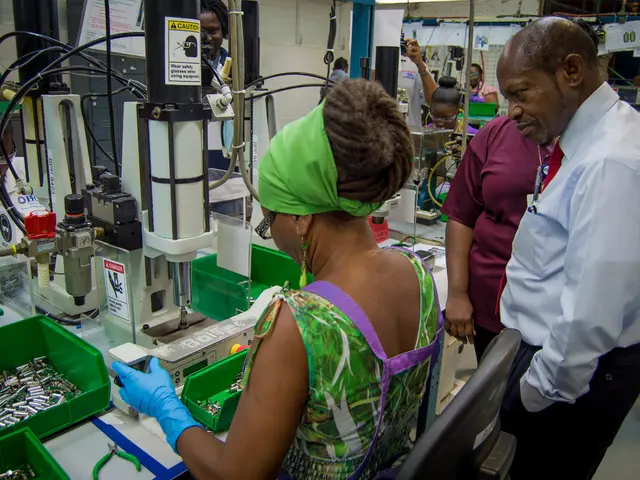Mastering Accuracy in Eye Surgeries: Detailed Insight into Ophthalmic Surgical Instruments
In the world of eye surgery, precision is everything. Thanks to the ever-evolving array of ophthalmic surgical tools, the field has seen a revolution, enabling surgeons to tackle even the most complex procedures with unprecedented accuracy and safety. This guide takes a deep dive into the intriguing world of these essential instruments, exploring their functionalities, groundbreaking advancements, and the impact they have on modern eye surgery.
1. Getting Familiar with Ophthalmic Surgical Tools
Ophthalmic surgical tools constitute a diverse arsenal of instruments, each crafted specifically for procedures pertaining to the eyes. Ranging from precise incisions to delicate manipulations, these tools cater to the specialized needs of ocular surgeries.
1.1 The Precision Blade: Scalpels
Scalpels are the fundamental building blocks of ophthalmic surgery, serving as the instruments of choice for making meticulous incisions with minimal tissue trauma. Their razor-sharp blades combined with ergonomic handles ensure surgical precision, while minimizing discomfort for patients.
1.2 The Delicate Grasp: Microforceps
Microforceps are indispensable in the realm of ophthalmic procedures, assisting in the gentle handling of tissues during surgeries. Their fine tips and spring-loaded mechanism grant surgeons remarkable precision when manipulating delicate tissues within the eye.
1.3 Cataract Surgery Innovation: Phacoemulsification Devices
Phacoemulsification devices have transformed cataract surgery by facilitating the efficient removal of the clouded lens through ultrasonic emulsification. These advanced tools minimize surgical trauma, accelerate recovery, and boost visual outcomes for cataract extraction patients.
1.4 Retinal Navigation: Vitrectomy Systems
Vitrectomy systems are invaluable for retinal surgery, enabling the removal of vitreous humor and providing access to the retina for repairs or treatments. Versatile and equipped with micro-incisional probes and cutting-edge illumination systems, these devices boost surgical visualization and precision in intricate vitreoretinal procedures.
1.5 Lighting the Way: Ophthalmic Lasers
Ophthalmic lasers play a critical role in various eye surgeries, offering focused energy delivery for tissue ablation, photocoagulation, and a range of other therapeutic interventions. They contribute significantly to improved surgical outcomes while minimizing collateral damage to surrounding tissues.
2. Embracing the Future with Technological Advancements
The landscape of ophthalmic surgical tools is ever-changing, driven by technological advancements and creative design concepts aimed at enhancing surgical precision, efficiency, and patient outcomes.
2.1 Robotics in Ophthalmic Surgery: A New Era of Precision
Robotic-assisted ophthalmic surgery promises to revolutionize surgical precision, offering unparalleled accuracy and reproducibility in complex procedures like retinal microsurgery and intraocular lens placement.
2.2 Artificial Intelligence Integration: Shaping the Future of Surgical Decision-Making
The seamless integration of artificial intelligence (AI) algorithms into ophthalmic surgical platforms holds immense potential for optimizing surgical planning, intraoperative guidance, and postoperative management. AI-driven analytics empower surgeons to make informed decisions, enabling superior clinical outcomes.
2.3 Nano-technology: A Tiny Giant Leap for Surgical Tools
Nano-technology is set to transform ophthalmic surgery by miniaturizing surgical tools and enhancing their maneuverability within the compact anatomy of the eye. From nano-scale incision blades to targeted drug delivery systems, these innovations offer unprecedented precision and therapeutic efficacy in the treatment of ocular diseases.
3. Frequently Asked Questions
How do ophthalmic surgical tools contribute to patient safety?
Ophthalmic surgical tools are painstakingly designed with patient safety in mind, boasting precision, minimizing tissue trauma, reducing surgical complications, and enhancing patient comfort during procedures. By ensuring accurate surgical maneuvers and effortless tissue handling, these tools lead to safer and more successful ophthalmic surgeries.
What are the key factors to consider when selecting ophthalmic surgical tools?
When selecting ophthalmic surgical tools, factors such as instrument ergonomics, blade sharpness, maneuverability, and compatibility with surgical platforms must be taken into account. Surgeons prioritize instruments that provide optimal precision, tactile feedback, and user-friendliness for achieving superior surgical outcomes.
Are ophthalmic surgical tools compatible with various surgical techniques?
Indeed, ophthalmic surgical tools are designed to accommodate a variety of surgical techniques, including phacoemulsification, vitrectomy, corneal transplantation, and refractive surgery. Manufacturers tailor their instruments to cater to the specific demands of different procedures, ensuring versatility and compatibility across surgical specialties.
How have technological advancements influenced the evolution of ophthalmic surgical tools?
Technological advancements drive continuous innovation in ophthalmic surgical tools, giving rise to smarter, more ergonomic, and efficient instruments. From robotic-assisted surgery to AI-driven decision-making tools and nano-technology, these advancements equip surgeons with unparalleled precision, control, and capability in ocular surgeries.
What role do ophthalmic lasers play in refractive surgery?
Ophthalmic lasers are the unsung heroes of refractive surgery, serving as the instruments of choice for reshaping the cornea to correct refractive errors such as myopia, hyperopia, and astigmatism. Popular refractive procedures such as LASIK (Laser-Assisted in Situ Keratomileusis) and PRK (Photorefractive Keratectomy) rely heavily on ophthalmic lasers, offering patients enhanced visual acuity and reduced reliance on corrective eyewear.
How do ophthalmic surgical tools contribute to minimally invasive surgery?
Ophthalmic surgical tools play a significant role in advancing minimally invasive surgery (MIS), enabling precise surgical interventions through smaller incisions and reduced tissue trauma. With the advent of miniaturized tools and micro-incisional techniques, surgeons can perform complex ocular procedures with minimal disruption to ocular structures, leading to quicker recovery times and better patient outcomes.
Conclusion:
In conclusion, ophthalmic surgical tools are the unrivaled cornerstones of modern eye surgery, powering precise and minimally invasive interventions across a wide range of ocular conditions. As technology progresses, these indispensable instruments will only become more integral in shaping the future of ophthalmology, ushering in an era of unparalleled precision and patient care.
To explore the latest and greatest in ophthalmic surgical tools, head over to Rigor Instruments and delve into the world of state-of-the-art equipment.
- The ever-improving sphere of ophthalmic surgical instruments not only includes the study of eye health inherent to health and wellness, but also encompasses the development of alternatives for managing medical-conditions that affect eye surgery.
- As technology continues to advance, we can look forward to the integration of robotics and artificial intelligence into ophthalmic surgical tools, revolutionizing precision and decidison-making within the field of medical-conditions related to eye-health and health-and-wellness.








